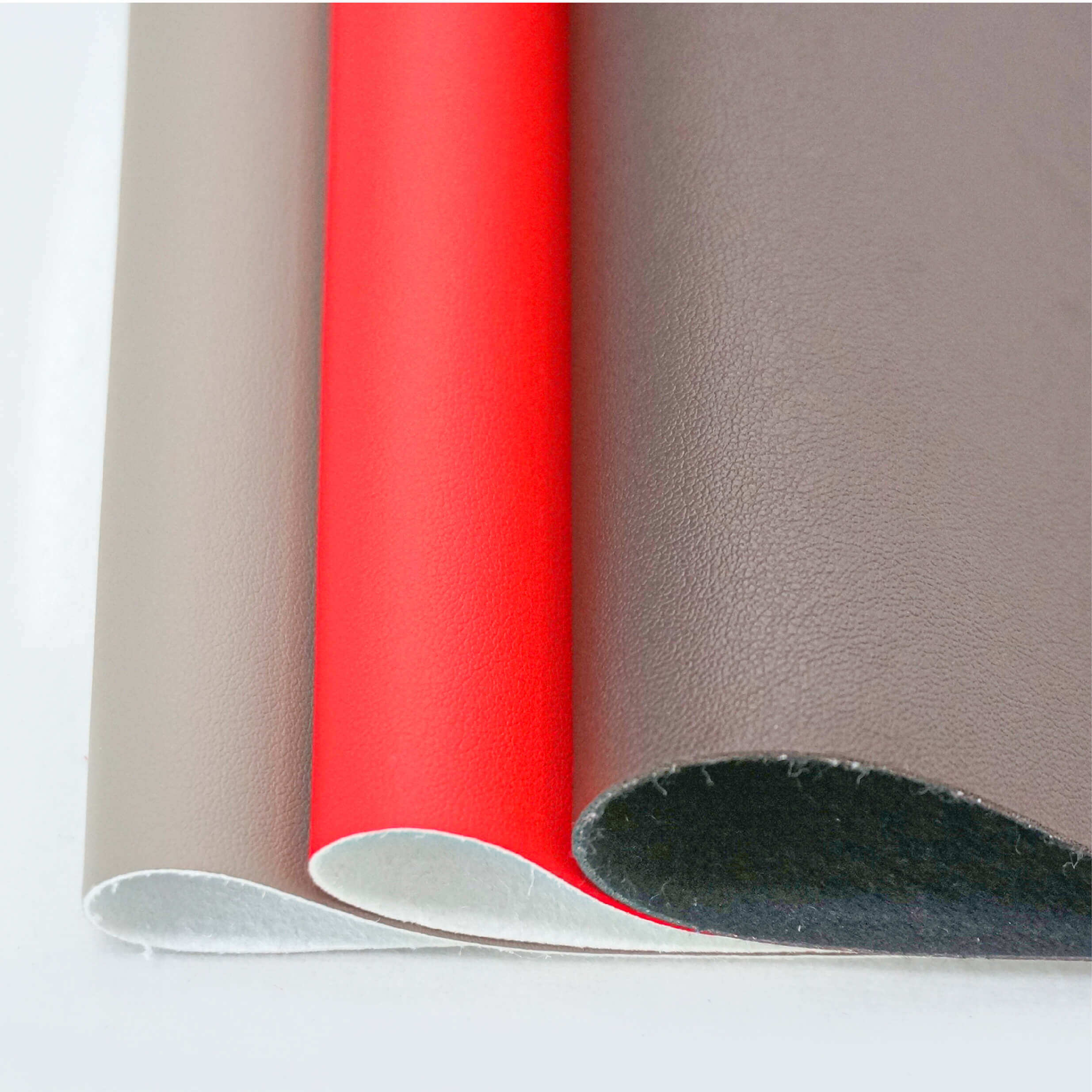Email format error
Email cannot be empty
Email already exists
6-20 characters(letters plus numbers only)
The password is inconsistent
Email format error
Email cannot be empty
Email does not exist
6-20 characters(letters plus numbers only)
The password is inconsistent

News

The Ultimate Guide to Sofa Leather Repair: Keeping Your Furniture Looking New
When you think of comfort and style in your living room, a leather sofa often comes to mind. These sleek, timeless pieces of furniture offer the perfect combination of elegance and coziness, easily becoming the focal point of any room. However, leather sofas, like all furniture, are prone to wear and tear over time. Scratches, cracks, fading, and general damage are all part of owning a leather sofa, but the good news is, with the right knowledge, most of these issues can be fixed. Sofa leather repair may sound complicated, but it’s easier than you think!
In this blog, we'll dive into various techniques, tools, and tips for repairing leather sofas at home, so you can extend the life of your favorite piece of furniture. Whether you're dealing with small scuffs or large cracks, this guide will equip you with everything you need to know about leather sofa repair.
Why Leather Sofas Need Care
Before jumping into sofa leather repair methods, it's essential to understand why leather furniture requires special attention. Leather is a natural material, which means it can be sensitive to the environment, moisture, and even daily use. Without regular maintenance, leather sofas can dry out, fade, or crack. Factors such as direct sunlight, temperature changes, and improper cleaning can also accelerate the damage.
Many people love leather for its durability and luxurious feel, but it’s important to remember that taking care of it is part of maintaining that high-quality look. The sooner you address any damage, the easier the repair process will be.
Common Types of Leather Sofa Damage
Before you can start repairing your leather sofa, you need to identify what type of damage you're dealing with. Each kind of damage requires a different approach, so here's a quick rundown of the most common problems:
Scratches: Pets, kids, or even just rough use can leave scratches on the surface of the leather. While light scratches might blend into the leather over time, deeper ones may require treatment.
Cracks: Leather that dries out over time can crack, especially in high-use areas like seats and armrests. These cracks can deepen and worsen if left untreated.
Fading: Exposure to sunlight can cause leather to lose its color, leaving patches that look worn and dull.
Peeling: In some cases, the top layer of leather can start peeling away, often due to moisture issues or heavy use. This type of damage can make a sofa look old and neglected.
Stains and Spills: Like any sofa, leather is vulnerable to spills and stains. If left untreated, these can set in and become difficult to remove.
Now that you know the types of damage, let's move on to the actual repair process.

DIY Sofa Leather Repair: Step-by-Step Guide
Step 1: Assess the Damage
Before grabbing any tools or products, take a moment to assess the damage. Is the problem a small scratch, or are there deep cracks and discoloration? Determining the severity of the damage will help you choose the right method and products. In some cases, you may be able to fix the problem yourself; in others, professional help may be needed.
Step 2: Clean the Leather
Before you can repair leather, it must be thoroughly cleaned. Use a soft cloth and a mild leather cleaner to remove any dirt, dust, or oils that have accumulated on the surface. Avoid harsh chemicals or abrasive materials that could further damage the leather.
To clean:
- Apply the leather cleaner to a soft cloth.
- Gently rub the surface of the sofa in small circles.
- Wipe away any excess cleaner with a dry cloth and let it air-dry.
Cleaning ensures that any repairs you make will stick to the leather and not to dirt or grime.
Step 3: Repair Scratches
Light scratches can often be fixed with a bit of leather conditioner. Here's how:
Condition the Leather: Apply a generous amount of leather conditioner to the scratched area. This helps soften the leather and can reduce the appearance of minor scratches.
Massage the Leather: Using a soft cloth, gently rub the conditioner into the scratched area, massaging it in small circles. With time, the scratch should become less noticeable.
For deeper scratches:
- You may need a leather repair kit, which usually includes a color-matching leather dye.
- Clean the scratched area and apply the dye carefully to fill in the scratch.
- Once the dye has dried, apply a leather conditioner to help blend the repaired area into the rest of the sofa.
Step 4: Repair Cracks
Cracks can be a bit more challenging than scratches, but they can still be repaired at home with a little patience.
Leather Filler: For small cracks, a leather filler is the best solution. Clean the area and apply the filler into the cracks using a palette knife or spatula. Smooth it over and let it dry completely.
Sand the Surface: Once the filler has dried, gently sand the surface with fine-grit sandpaper to create an even texture.
Dye the Area: Use leather dye that matches the color of your sofa to cover the repaired area. Apply multiple thin layers until the color matches the rest of the sofa.
Condition the Leather: Once the dye has dried, condition the leather to restore its softness and shine.
Step 5: Repair Peeling Leather
Peeling leather often occurs when the protective topcoat wears away. To fix this:
Apply Leather Adhesive: If the peeling is minor, you can use leather adhesive to glue down any loose pieces of leather.
Use a Leather Repair Kit: For more significant peeling, a leather repair kit with a matching color might be necessary. The kit will usually include adhesive, filler, and dye to cover the damaged area.
Finish with a Sealant: Once the repair is complete, apply a sealant or topcoat to prevent further peeling.
Step 6: Deal with Fading
Sunlight is one of the biggest culprits of fading leather. To restore the color:
Leather Dye: Use a leather dye that matches the original color of your sofa. Apply it in thin, even layers, letting each layer dry before adding the next.
Buff and Condition: After the dye has fully dried, buff the surface with a soft cloth and apply a conditioner to restore the leather's shine.
Step 7: Remove Stains
Stains can be tricky on leather, but with the right approach, you can often remove them:
Water-Based Stains: Use a damp cloth to gently blot the area. Do not rub, as this can spread the stain.
Oil-Based Stains: Sprinkle cornstarch or talcum powder over the stain to absorb the oil. Let it sit for a few hours, then wipe it off with a dry cloth.
Ink Stains: Ink can be tough to remove, but rubbing alcohol on a cotton swab can sometimes do the trick. Test in an inconspicuous area first to ensure it doesn’t damage the leather.
Tools and Products for Sofa Leather Repair
To make your sofa leather repair project easier, having the right tools and products on hand is essential. Here are some must-haves:
- Leather cleaner: For cleaning and preparing the leather surface.
- Leather conditioner: To moisturize and protect the leather after repairs.
- Leather repair kit: These kits usually include filler, adhesive, and dye in matching colors.
- Leather dye: To restore color to scratched, cracked, or faded areas.
- Leather filler: For filling in cracks and deep scratches.
- Fine-grit sandpaper: For smoothing out filled cracks.
- Sealant: To protect repaired areas from further damage.
When to Call a Professional
While many leather repairs can be done at home, there are times when calling in a professional is the best option. If the damage is extensive, such as large cracks, severe peeling, or deep stains, a professional repair service may be able to save your sofa. They have access to advanced tools and techniques that can restore even severely damaged leather.
Preventing Future Damage
Once you've successfully repaired your leather sofa, it's important to maintain it to prevent future damage. Here are a few tips:
- Keep it clean: Regularly dust and clean your sofa to prevent dirt buildup.
- Avoid direct sunlight: Place your leather sofa away from windows or use curtains to block the sun’s rays.
- Condition regularly: Use a leather conditioner every few months to keep the leather soft and hydrated.
- Be mindful of pets: If you have pets, consider using a throw blanket to protect the sofa from scratches.
Conclusion
Sofa leather repair doesn’t have to be daunting. With the right tools, a little patience, and some basic knowledge, you can restore your leather sofa to its former glory. Whether you're dealing with minor scratches or more significant cracks and fading, this guide should help you through the process step by step.

